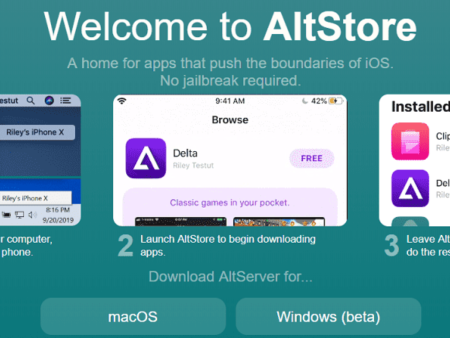How to Utilize Data by using Mobile App Analytics Services
-
13/03/2023
-
791
-
0
- 1. Tracking User Behavior and Engagement
- 2. Measuring Key Performance Metrics of Mobile App Analytics Services
- 3. Optimizing User Experience of Mobile App Analytics Services
- 4. Identifying and Fixing App Issues
- 5. Understanding Your Target Audience of Mobile App Analytics Services
- 6. Using Analytics to Drive App Monetization
- Conclusion
Mobile app analytics services can provide valuable insights and data to help developers and marketers improve their app's performance, user experience, and revenue generation.
Related posts
A Comprehensive Guide to App Store Marketing Strategies
Boost Your App's Success with These Top ASO Tools And Techniques
1. Tracking User Behavior and Engagement
Tracking user behavior and engagement is essential for any business or organization that wants to understand how its audience interacts with its product, service, or content. There are several ways to track user behavior and engagement, including:
Web analytics tools: Web analytics tools like Google Analytics can provide valuable insights into user behavior on a website or mobile app. These tools track metrics like pageviews, time on site, bounce rate, and conversion rate, which can help businesses understand how users interact with their website or app.

Tracking User Behavior and Engagement, Source: Asoservice.com
User surveys: Conducting user surveys can help businesses gather feedback from their audience about their product or service. This feedback can be used to improve the user experience and increase engagement.
A/B testing: A/B testing involves testing two different versions of a website or app to see which version performs better. This can help businesses understand what changes they can make to improve user engagement and behavior.
Heatmaps: Heatmaps visually represent user behavior on a website or app. They show where users click, scroll, and hover on the page, which can help businesses identify areas of high engagement and areas that need improvement.
Social media analytics: Tools like Facebook Insights and Twitter Analytics can provide valuable insights into how users engage with a business's social media content. These tools track metrics like likes, shares; comments, and click-through rates, which can help businesses understand what content resonates with their audience.
Tracking user behavior and engagement is essential for businesses to understand how their audience interacts with their product or service. By using the right tools and techniques; businesses can gather valuable insights that can help them improve their user experience and increase app ratings.
2. Measuring Key Performance Metrics of Mobile App Analytics Services
Measuring key performance metrics (KPIs) is crucial for businesses and organizations to evaluate their success and progress toward their goals. KPIs are specific, measurable, and quantifiable metrics that reflect the performance of a business or organization in a particular area. Here are some common KPIs that businesses may measure:
Sales revenue: This KPI measures the total amount of money a business generates from selling products or services.
Customer acquisition cost (CAC): CAC measures the cost of acquiring a new customer, which includes all marketing and sales expenses.
Conversion rate: This KPI measures the percentage of visitors to a website or landing page that take a desired action, such as making a purchase or filling out a form.
Customer lifetime value (CLV): CLV measures the total amount of money a customer is expected to spend on a business's products or services over their lifetime.
Return on investment (ROI): ROI measures the profitability of an investment, calculated as the gain or loss from an investment divided by the cost of the investment.
Website traffic: This KPI measures the total number of website visitors over time.
Social media engagement: This KPI measures the level of engagement with a business's social media content, such as likes, shares, comments, and click-through rates.
Customer satisfaction: This KPI measures the level of satisfaction among a business's customers through surveys or feedback.
By tracking and analyzing these KPIs, businesses can gain insights into their performance and identify improvement areas. Businesses must set realistic targets for each KPI and regularly review their progress. This can help businesses make data-driven decisions and optimize their strategies to improve their performance.
3. Optimizing User Experience of Mobile App Analytics Services
Optimizing user experience (UX) is essential for businesses and organizations that want to provide customers with a positive and enjoyable experience when interacting with their product; service, or content. Here are some strategies that businesses can use to optimize UX:
User research: Businesses can conduct user research to understand their audience's needs, preferences, and behavior. This can involve surveys, focus groups, or one-on-one interviews with users.
Create user personas: User personas are fictional characters that represent different user segments. They can help businesses understand their audience, and tailor their UX to meet their needs and preferences.
Simplify navigation: Businesses can simplify their website or app navigation to make it easy for users to find what they want. This can involve using clear and descriptive labels, organizing content into categories, and reducing clutter.
Optimize page load times: Slow page load times can frustrate users and lead to high bounce rates. Businesses can optimize ASO for page load times by compressing images, minimizing code, and using content delivery networks.
Use clear and concise language: Businesses can use clear and concise language in their website or app copy to make it easy for users to understand what they are reading.
Provide clear calls-to-action: Businesses can use clear and prominent calls-to-action to guide users towards desired actions, such as purchasing or filling out a form.
Test and iterate: Businesses can use A/B testing and user feedback to test different UX designs and iterate on their approach based on what works best for their audience.
Businesses can improve customer satisfaction, increase engagement, and drive business results by optimizing UX. It is essential for businesses to regularly review their UX and make changes based on user feedback and data analysis.
4. Identifying and Fixing App Issues
Identifying and fixing app issues is essential for businesses and organizations that want to provide users with a positive and seamless experience. Here are some strategies that businesses can use to identify and fix app issues:
Monitor app performance: Businesses can use app performance monitoring tools to track metrics like app crashes, response times, and user behavior. This can help identify areas of the app that need improvement.
Conduct user testing: Businesses can conduct user testing to gather feedback from real users on their app experience. This can involve one-on-one interviews, surveys, or focus groups.
Analyze user feedback: Businesses can analyze user feedback from app store reviews, social media, and customer support channels to identify common issues and complaints.
Prioritize issues: Businesses can prioritize app issues based on their severity and impact on user experience. This can involve categorizing issues into high; medium, and low priority and focusing on fixing the highest-priority issues first.
Work with a development team: Businesses can work with a development team to fix app issues and implement improvements. This can involve developing a roadmap for app updates and fixes, and regularly reviewing progress.
Test and iterate: Once app issues have been identified and fixed, businesses can use A/B testing and user feedback to test different approaches and iterate on their app design.
Businesses can improve user satisfaction, increase engagement; and drive business results by identifying and fixing app issues. It is essential for businesses to regularly monitor and analyze their app performance, prioritize issues, and work with a development team to make improvements.
5. Understanding Your Target Audience of Mobile App Analytics Services
Understanding your target audience is essential for mobile app analytics services that want to provide insights and data to app developers, marketers, and business owners. Here are some strategies that mobile app analytics services can use to understand their target audience:
Conduct user research: Mobile app analytics services can conduct user research to understand their target audience's needs, preferences, and behavior. This can involve surveys, interviews, or focus groups with app developers, marketers, and business owners.
Identify user personas: Mobile app analytics services can identify user personas representing different target audience segments. This can help them understand the unique needs and preferences of different users.
Analyze user data: Mobile app analytics services can analyze user data to understand how app developers, marketers, and business owners are using their platform. This can involve tracking metrics like user engagement, retention, and conversion rates.
Provide targeted content: Mobile app analytics services can provide targeted content that addresses their target audience's specific needs and pain points. This can involve creating blog posts, webinars, or tutorials that provide insights and best practices for app development and marketing.
Offer personalized support: Mobile app analytics services can offer personalized support to their users, such as one-on-one consultations or email support. This can help build a strong relationship with their target audience and improve customer satisfaction.
Test and iterate: Mobile app analytics services can use A/B testing and user feedback to test different approaches and iterate on their platform to meet the evolving needs of their target audience.
By understanding their target audience, mobile app analytics services can provide valuable insights and data that help app developers, marketers; and business owners optimize their app performance and drive business results. It is essential for mobile app analytics services to regularly review; and analyze their user data, provides targeted content and support, and iterate on their platform based on user feedback.
6. Using Analytics to Drive App Monetization
Analytics can drive app monetization by providing insights into user behavior, engagement; and revenue generation. Here are some strategies that app developers and marketers can use to leverage analytics to drive app monetization:
Analyze user behavior: App developers can use analytics to analyze user behavior within their app, such as how often users open the app; what features they use most, and how long they spend on the app. This can help developers identify opportunities to monetize their app; such as offering in-app purchases or displaying ads.
Track user engagement: App developers can use analytics to track user engagement and retention rates, which can help them understand how often users return to the app and how long they stay engaged. This can help developers optimize their app design and content to increase user engagement and drive monetization opportunities.
Monitor revenue streams: App developers can use analytics to monitor revenue streams within their app, such as in-app purchases, subscriptions; and advertising revenue. This can help developers identify the most profitable revenue streams, and make informed decisions about pricing and monetization strategies.
Implement targeted advertising: App developers can use analytics to implement targeted advertising within their app; which can increase the effectiveness of ads and drive higher revenue. This can involve using user data to display relevant and valuable ads to individual users.
Leverage user feedback: App developers can use user feedback and reviews to understand user needs and preferences and make informed decisions about app monetization strategies. This can help developers create monetization strategies; aligned with user expectations and needs. Or you can buy Google reviews to increase your app ranking on App Store.
By leveraging analytics to drive app monetization, app developers and marketers can increase revenue generation and improve the overall success of their apps. App developers must regularly review and analyze their user data; track revenue streams, and use A/B testing and user feedback to make informed decisions about app monetization strategies.
Conclusion
By leveraging the power of mobile app analytics services to analyze user data, identify trends, and make informed decisions, app developers and marketers can optimize their app's performance, drive user engagement, and increase revenue generation.
Related posts
Buy App downloads for Android, iOS apps and games at the cheapest price
How to Increase App installs from Google ads for Android and iOS apps
Thanks so much for reading this article.
Source: https://asoservice.com/




































Leave a Reply
Your e-mail address will not be published. Required fields are marked *